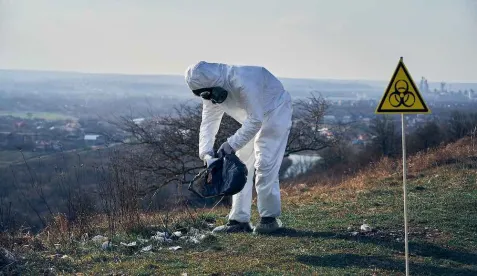The U.S. Environmental Protection Agency (EPA) announced on March 29, 2021, that it is evaluating its policies, guidance, templates, and regulations under the Toxic Substances Control Act (TSCA) new chemicals program to ensure they “adhere to statutory requirements,” the Biden-Harris Administration’s executive orders, and other directives. EPA identified several instances where its approach for making determinations and managing risks associated with new chemicals can, according to EPA, more closely align with TSCA’s requirements to ensure protections for human health and the environment, including the use of significant new use rules (SNUR) and assumptions related to worker exposures. EPA states that it will stop issuing determinations of “not likely to present an unreasonable risk” based on the existence of proposed SNURs. According to EPA, “[r]ather than excluding reasonably foreseen conditions of use from EPA’s review of a new substance by means of a SNUR, Congress anticipated that EPA would review all conditions of use when making determinations on new chemicals and, where appropriate, issue orders to address potential risks.” Going forward, when EPA concludes that one or more uses may present an unreasonable risk, or when EPA believes that it lacks the information needed to make a safety finding, EPA will issue an order to address those potential risks.
EPA states that as has been the “long-standing practice,” it intends to continue issuing SNURs following TSCA Section 5(e) and 5(f) orders for new chemicals to ensure the requirements imposed on the submitter via an order apply to any person who manufacturers or processes the chemical in the future. EPA notes that this ensures that other manufacturers of the same new chemical substance are held to the same conditions as the submitter subject to the TSCA Section 5(e) or 5(f) order.
EPA states that it now intends to ensure necessary protections for workers identified in its review of new chemicals through regulatory means. According to the announcement, where EPA identifies a potential unreasonable risk to workers that could be addressed with appropriate personal protective equipment (PPE) and hazard communication, EPA will no longer assume that workers are protected adequately under the Occupational Safety and Health Administration’s (OSHA) worker protection standards and updated safety data sheets (SDS). Instead, EPA will identify the absence of worker safeguards as “reasonably foreseen” conditions of use, and mandate necessary protections through a TSCA Section 5(e) order, as appropriate.
Commentary
The first policy change -- that the Office of Pollution Prevention and Toxics (OPPT) will no longer employ the “non-order SNUR” construction to regulate new chemicals without an order -- was somewhat predictable. This construction has, since its inception, led to questions about whether this interpretation meets the requirements under TSCA Section 5. In our view, EPA issuing a SNUR to prohibit conditions of use that EPA identifies as potentially leading to an unreasonable risk was an appropriate and expeditious means to achieve the protective end (the TSCA regulation) without the inefficiency and delays associated with the development of a consent order. EPA would only use this option when EPA concluded the intended conditions of use were not likely to present an unreasonable risk. It is not clear why a SNUR is viewed as being less protective than an order, when an order applies only to the premanufacture notice (PMN) submitter and a SNUR applies to all actors in the supply chain. EPA is required to promulgate a SNUR that conforms to an order absent a reason otherwise. The claim that undertaking a condition of use that is defined in a SNUR as a significant new use “requires only notification to EPA” misrepresents the rigor of the significant new use notice (SNUN) process. A SNUN function just like a PMN, with a similar level of effort required on the submitter’s and EPA’s parts and nearly identical determination outcomes (a consent order, modification of the existing SNUR, or revocation of the existing SNUR if warranted), so saying that a SNUN is “just a notification to EPA,” is the equivalent of stating that a PMN is “just a notification to EPA.” Detractors might also claim that orders include testing, but that presumes that testing is required for EPA to make an informed decision. If EPA can, as it routinely does, make a decision based on conservative assumptions with analogs, models, and information provided by the submitter, EPA can similarly make an informed decision about what measures are necessary to achieve its protective goal without new test data. In Bergeson & Campbell, P.C.’s (B&C®) view, this policy change will add marginal, if any, protective benefit at a significant increase in effort by both EPA and the submitter.
EPA’s decision that it no longer views use of PPE as reasonably foreseeable is an unwelcome and unprincipled development. B&C, on behalf of the TSCA New Chemicals Coalition (NCC), provided, at OPPT’s request, a robust data set that demonstrated that proper PPE is rarely not used in an industrial/commercial setting. A database of 40 years of OSHA violations contained very few glove, goggle, and general dermal protection violations -- all obvious violations to any inspector. The marginal number of OSHA violations supports the NCC’s view that standard PPE use is both reasonably foreseeable and highly likely and demonstrably so. Today’s unexplained reversal is difficult to reconcile with these facts. If EPA proceeds to issue orders for every PMN that may present a risk if workers do not take routine protective measures, then EPA will be required to regulate nearly every PMN in which EPA identifies a hazard other than “low hazard” for health and ecotoxicity, as was EPA’s practice when the Lautenberg amendments were passed in 2016. As we have stated previously, that would mean that EPA will be implementing TSCA as a hazard-based law, instead of the clear risk-based law that it is.





 />i
/>i

